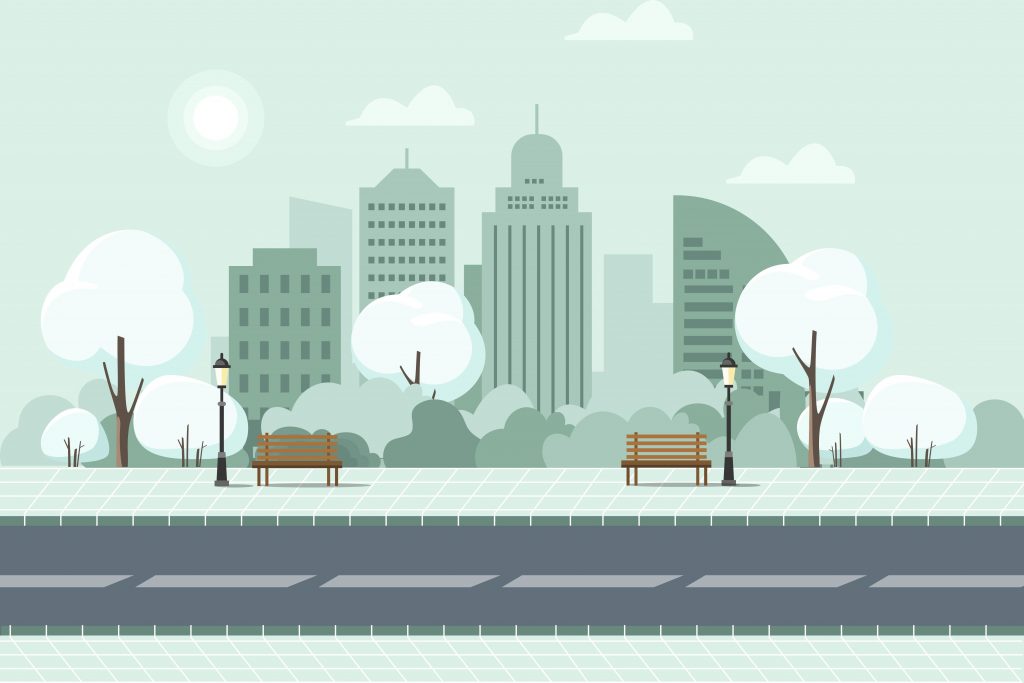Ranked 14th most populous country in the world with over 112 million people inhabiting only 13.7% of the total area of the country’s 1 million square kilometers, pressure is rising on existing cities’ infrastructures. Accordingly, the government is in the process of expanding its livable land by developing new urban areas. According to the World Bank, 70% of the global population will reside in cities by 2050, compared to 56% today.
This rapid urbanization will increase emissions and pressure on public services, such as healthcare, transportation, and education. Accordingly, governments are keen on utilizing smart solutions. “If cities are our best hope for a better future, smart technologies are the path to that better future,” said Jesse Berst, founder of the Smart Cities Council, in 2015.
“Countries are turning to smart city technologies to overcome population challenges and maximize existing resources. Smart cities represent a bridge toward a practical future of urban development,” according to a Deloitte 5G Smart Cities Whitepaper in June 2020,
Egypt plans to construct 38 fourth-generation smart cities to enhance infrastructure, improve public services, establish a sustainable urban environment, and attract foreign capital.
As they design these new spaces, developers need to strengthen cities’ social infrastructure to best meet the needs of residents. “Cities are focused on people, first and foremost,” said The Smart Cities Dive, a specialized news platform. Accordingly, countries should focus on humanizing tech-driven cities and mitigate the challenges dwellers may face.
Accelerated adoption
The pandemic and climate crisis have accelerated the need for technology adoption in cities to improve efficiency and reduce their environmental impact. “These global challenges are amplifying long-standing local issues around the quality of public services, environmental standards, and social inequalities,” said Eric Woods, research director with Guidehouse Insights, a market intelligence and advisory firm covering the global energy transformation.
Technology, he said, is transforming the way cities work and how people experience them.
Since 2020, the global smart cities market has experienced significant growth. The “Smart Cities: Global Strategic Business Report, published in November, states the global market for smart cities, estimated at nearly $1 trillion in 2022, is projected to reach $5.2 trillion by 2030, an average annual growth rate of 22.9%.
Smart cities require significant investment in cutting-edge technologies, such as 5G and Internet of Things (IoT)-enabled infrastructure. A 2023 report by Guidehouse Insights estimated the global smart city technology market’s annual revenue would increase from $121 billion in 2023 to $301 billion by 2032, reflecting an average annual growth of 10.7%. It also forecasts cumulative revenue between 2023 and 2032 will reach just under $2 trillion.
Smart urban development unlocks opportunities for real-estate stakeholders, particularly companies specializing in smart building and technology. According to the UAE’s Ministry of Economy website, experts forecast that the global smart building market will almost triple in value to $229 billion by 2026, compared to $82.6 billion in 2020.
Balancing the equation
In practice, the emphasis on leveraging technological advancements minimizes the human side due to the public’s lack of participation in the smart city’s creation phase. Cocoflo, a software company based in Canada, advocates a citizen-centric approach to city planning that goes hand in hand with technology. “As cities continue their digital transformation journeys, placing citizens at the heart of these initiatives is crucial for building stronger cities for the future,” Cocoflo said on its website. Accordingly, countries should balance deploying technological advancements in smart cities and serving human needs.
Implementing advanced building controls, green building design, and smart traffic management systems in fourth-generation cities should eliminate the traditional frustrations of city living and make the residents’ lives easier with lower environmental costs. Jens Hörning, PwC Partner, CEE Industrial Manufacturing and Automotive Industry Leader, “Smart cities harness technology to improve quality of life and increase the efficiency of urban mobility and access to services.”
That’s how smart cities can be more attractive for people, especially the younger generations, in terms of housing options and the services available in contrast to traditional cities. Horning noted that focusing on easing traffic congestion, air pollution, maximizing road safety, and active mobility such as walking and cycling are crucial in improving the livability of smart cities’ citizens.
A case in point is the 2026 Melbourne City Plan, which aims to create a smart city that promotes “health and well-being,” “citizen participation,” and “social justice.” Melbourne’s plan concentrates on creating public spaces that consume as little natural resources as possible, an integrated system of public transport (rail, tram, and bus services), a better system to collect citizen feedback, and enabling more participation in government decision-making.
However, training individuals to utilize innovative tools and available services effectively must come first. Alice Charles, Cities Lead on the Infrastructure and Urban Services Platform at the World Economic Forum, noted, “It is imperative that cities focus on enhancing the digital literacy skills and accessibility of the technology, too, if it is going to be of benefit to citizens and drive inclusion rather than exclusion.
Smart housing
The real estate market is one of the Egyptian economy’s most dynamic and promising sectors. Its substantial growth, particularly during periods of currency devaluation, has attracted foreign investors.
According to Mordor Intelligence, a market research firm based in Hyderabad, India, Egypt’s residential real estate market is expected to grow from $18 billion in 2023 to $30 billion by 2028.
New fourth-generation smart cities, including New Mansoura City in the Nile Delta region, Al Galala City in northeast Egypt, New Nasser City in West Assiut, and New Aswan City in Upper Egypt, feature digital solutions and green technology to optimize the use of existing resources in the cities and use low-energy lighting and infrastructure to reduce energy consumption.
According to Statista, a data aggregating portal, the Egyptian smart cities market size should grow annually by an average of 13% from 2023 to 2028.
During Egypt’s Story of Homeland conference in October at the New Administrative Capital, Minister of Housing, Utilities, and Urban Communities Assem el-Gazzar said the construction of smart cities “aims to reduce congestion, generate job opportunities, and utilize technology and artificial intelligence for a better quality of life in line with Egypt’s Vision 2030.”
Sustainable and environmentally friendly solutions are necessary to drive the success of smart cities. Mahmoud Mohieldin, U.N. climate change high-level champion for Egypt and U.N. special envoy on financing the 2030 Sustainable Development Agenda, stressed the need to decarbonize the environment, depend more on sustainable transport, recycle more waste, and adhere to global environmental standards. Mohieldin said successful urban development hinges on several factors, including effective governance and active participation.
Egypt’s dedication to boosting its real estate sector is due in part to the investment potential of new cities. Walid Abbas, deputy chairman of the New Urban Communities Authority, noted that “total investments in Egypt’s new cities have reached EGP 705 billion, equivalent to $22.82 billion,” reported Al-Ahram.
Upgrading existing cities
Constructing a smart city can take a long time and questions may arise concerning the affordability of relocating to one. In the meantime, the focus should shift toward incorporating smart technology into existing cities.
Mohieldin highlighted the necessity of transforming older cities into smart, green cities while preserving their character. He also said the government has to deal with “the crisis of slums and residential communities stuck between rural communities and advanced urban cities,” Al-Ahram reported.
Cities account for 80% of global GDP and 70% of harmful emissions, according to Mohieldin, and therefore, all cities should adhere to environmental and climate standards.
Deploying smart technologies in existing cities could prove a better alternative for a middle-income country like Egypt. El-Gazzar highlighted that from 2014 to 2023, Egypt has invested EGP 1.3 trillion in cities. The ministry allocated 25% of the funds for existing cities, with the remainder going to develop new fourth-generation cities.
Leveraging professional expertise is crucial for improving the overall quality of existing cities. Abdel Khaleq Ibrahim, assistant minister of housing for technical affairs, discussed collaborative efforts with the Korean foundation KIND for Infrastructure and Urban Development. The meeting in October involved the proposal for a master plan to transform Badr City, built in 1982, into a smart city, Invest-Gate reported.
Targeting youth
Involving the young generations in designing and building smart cities is crucial for real estate stakeholders. According to a study published by Birmingham City University School of Engineering and the Built Environment in April, “Young people can help broaden the horizons of what the future city can be and allow alternative conversations to take place within the policy realm.”
That is vital for Egypt, as UN-Habitat reports that 60% of urban populations will be under the age of 18 by 2030,
Mohamed Farghal, a 22-year-old engineering student at the German University in Cairo, said he would be interested in living in a smart city because of the healthy environment characterized by fewer carbon emissions and use of biodegradable materials. However, he said, “The cost of constructing a smart city is higher than a traditional city as a result of the added technology and facilities. Therefore, the cost of housing will also be higher.”
To make the benefits of smart cities more affordable, Farghal believes governments should work on existing cities instead of building smart cities.
Mahmoud El-Shablangy, a 22-year-old mechanical engineering student at the American University in Cairo, said, “Smart cities are the future where we would aspire to have everything connected and monitored with automatic feedback, giving people a premium sort of comfort and convenience.” He noted that smart technologies would improve safety, security, sustainability, and resource optimization but with higher living costs than traditional cities.
On another note, Shimaa Ahmed, 22, an engineering student at the German University in Cairo, noted that living in a smart city would make her life easier by saving time and effort. She expects to find technology seamlessly integrated into every aspect of daily life, from grocery shopping to traffic management. Hence, she emphasizes integrating the human dimension into smart city design to maximize its effectiveness and appeal.
The human-centered approach is a win for real estate stakeholders. As Guy Perry, an urban designer and developer, noted in an article for McKinsey & Company: “Cities that have succeeded in undertaking major projects with a focus on resident welfare have created enriching communities that yield a cycle of benefits for residents, investors, and society.”







